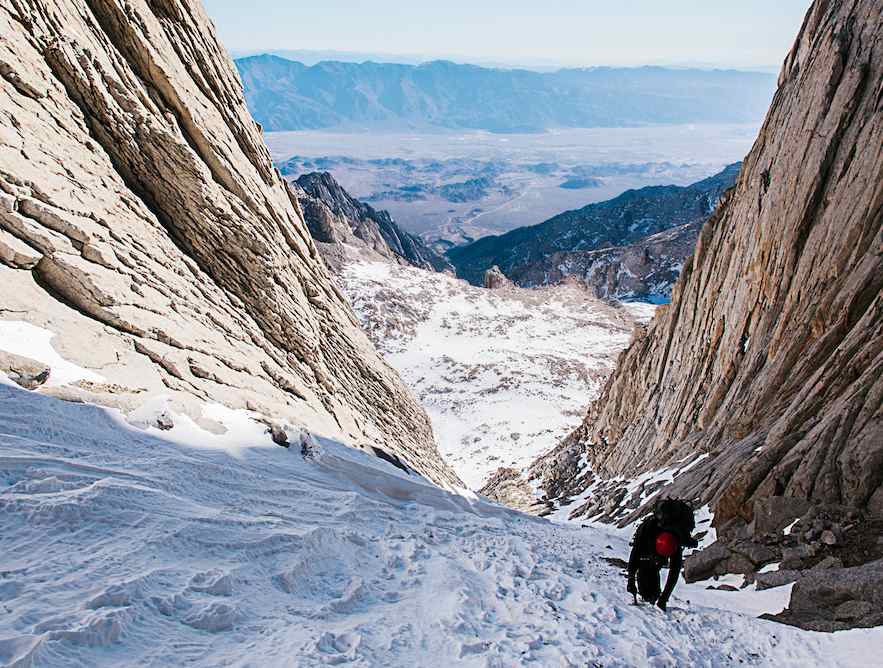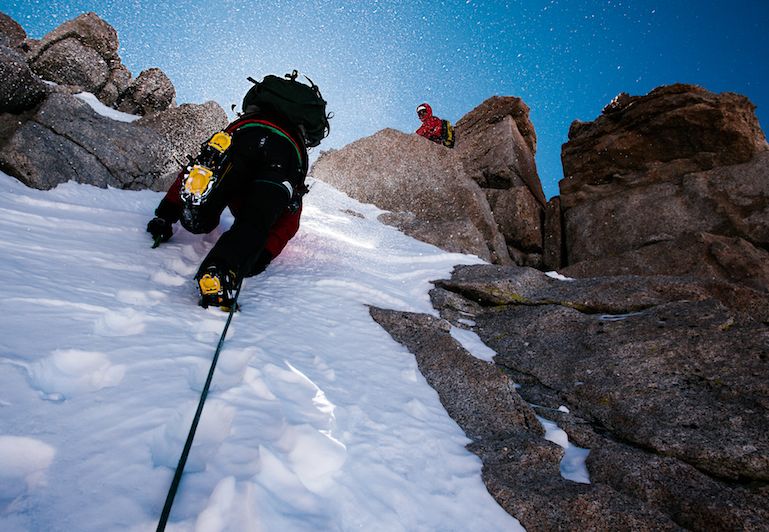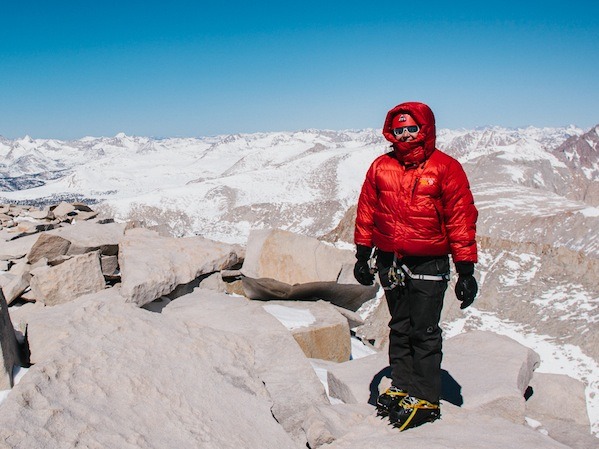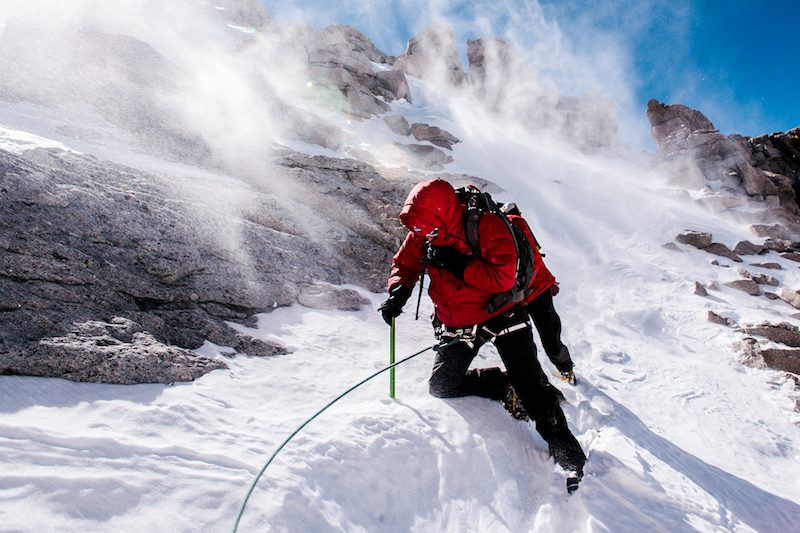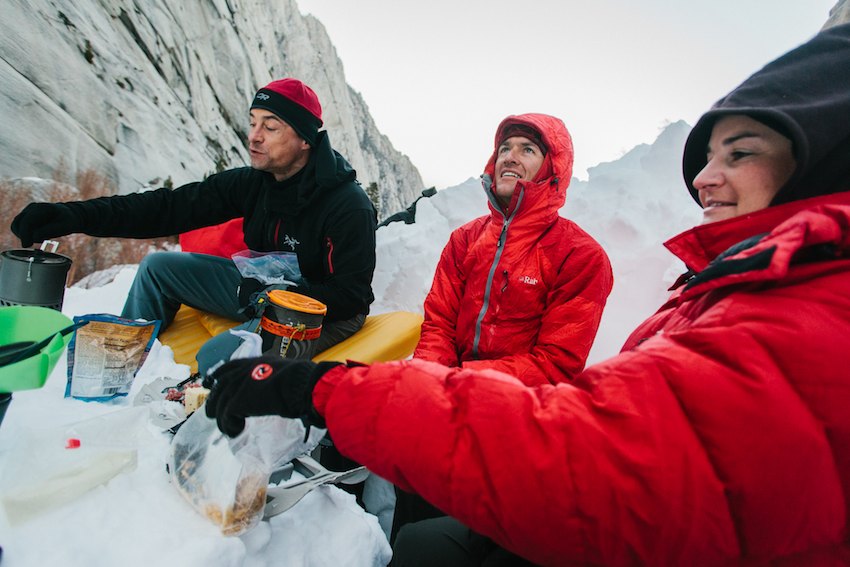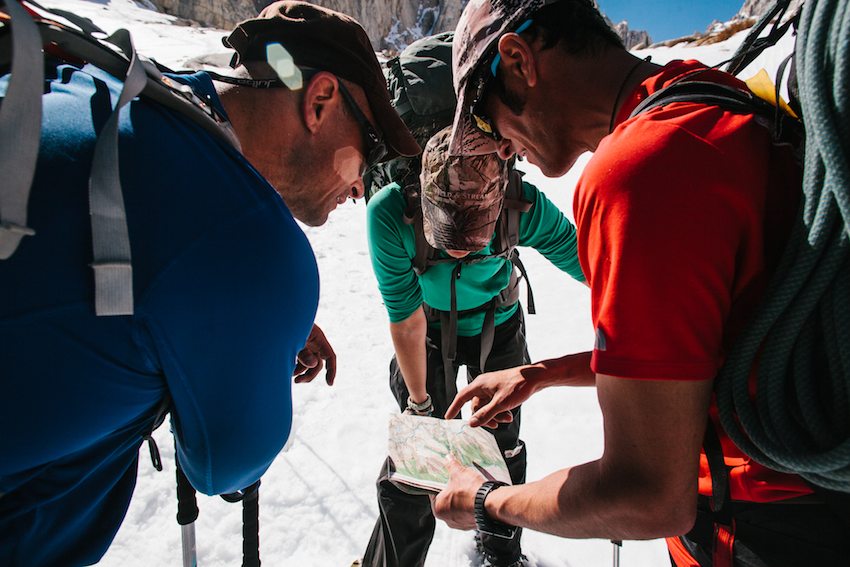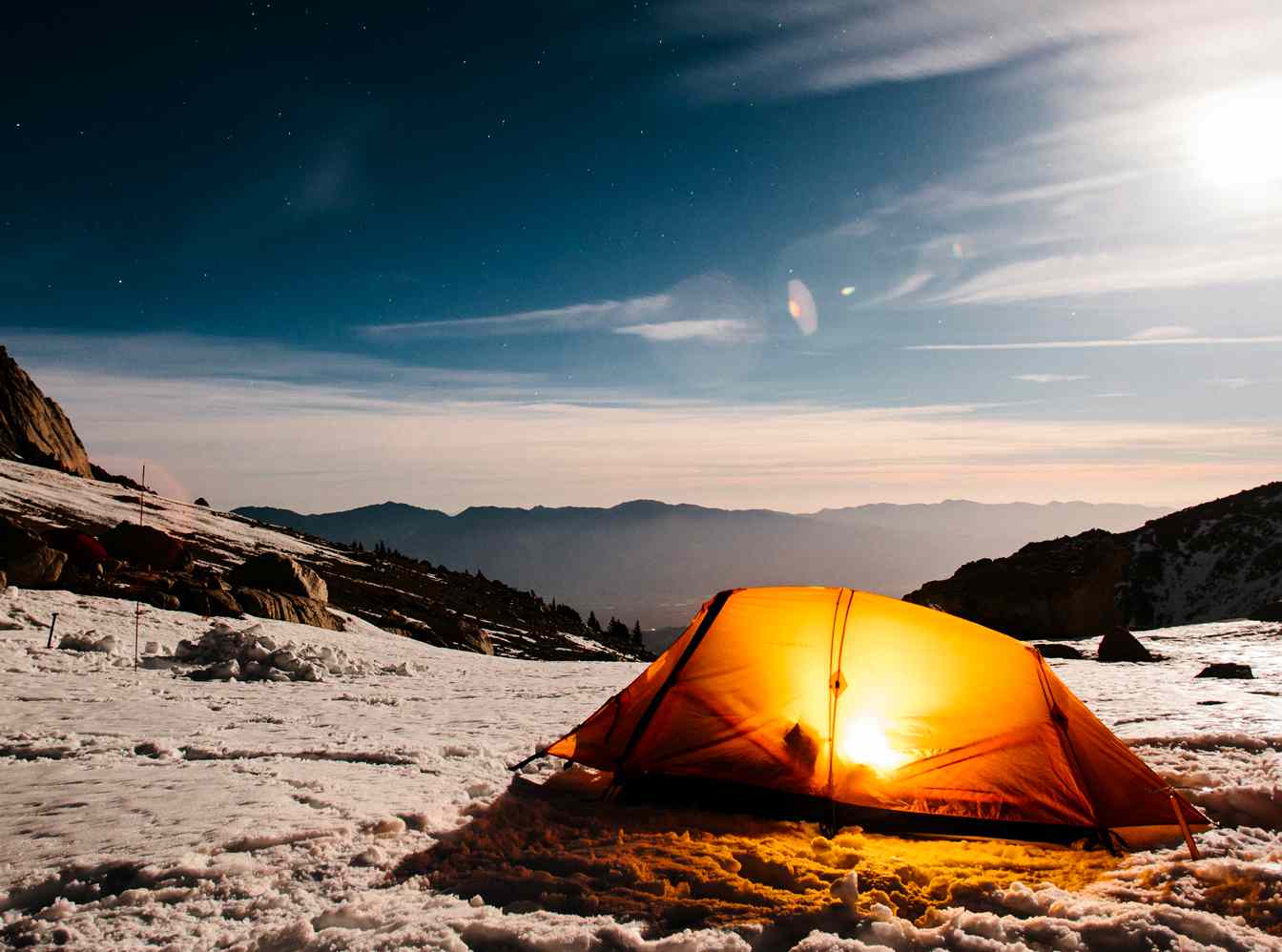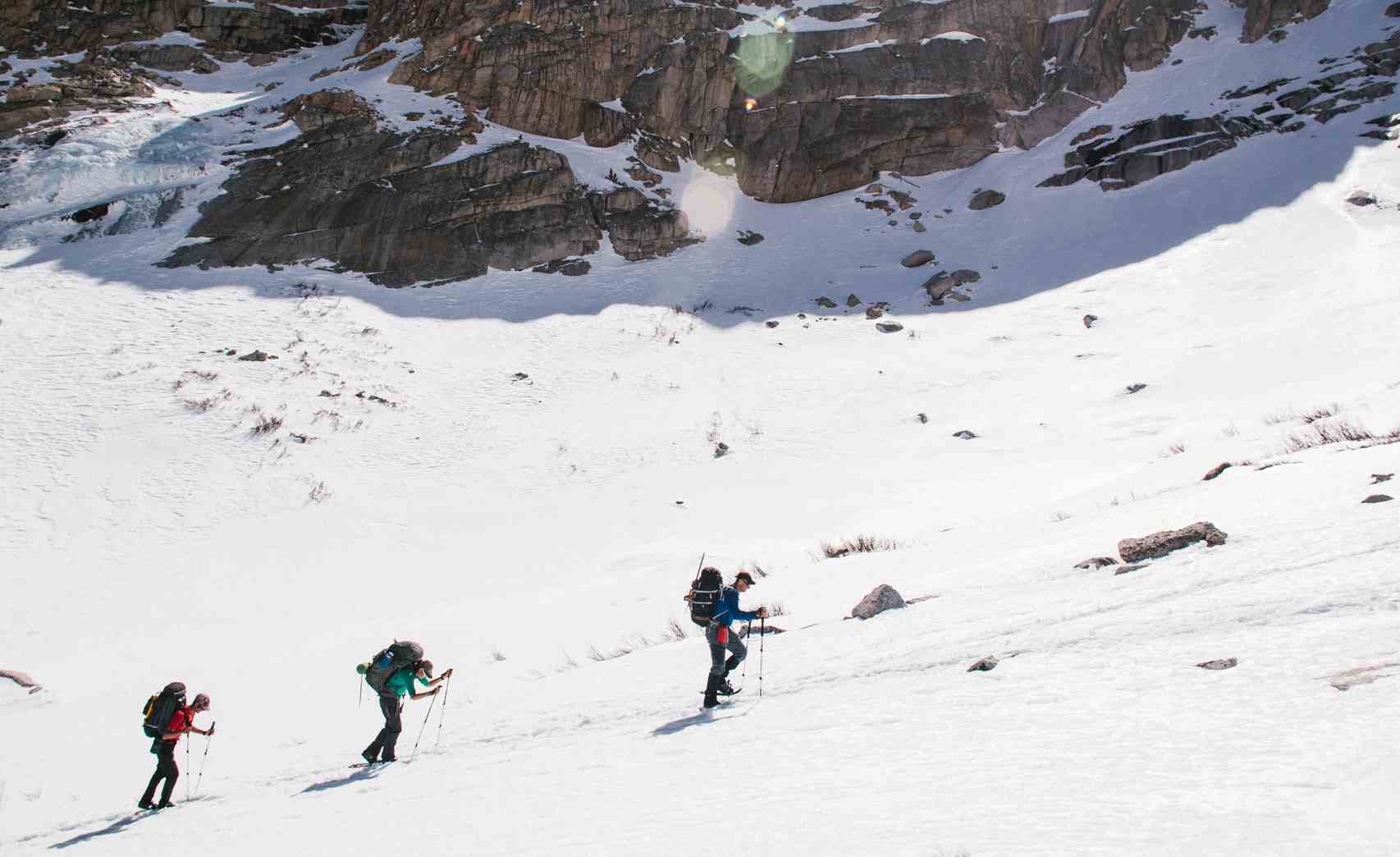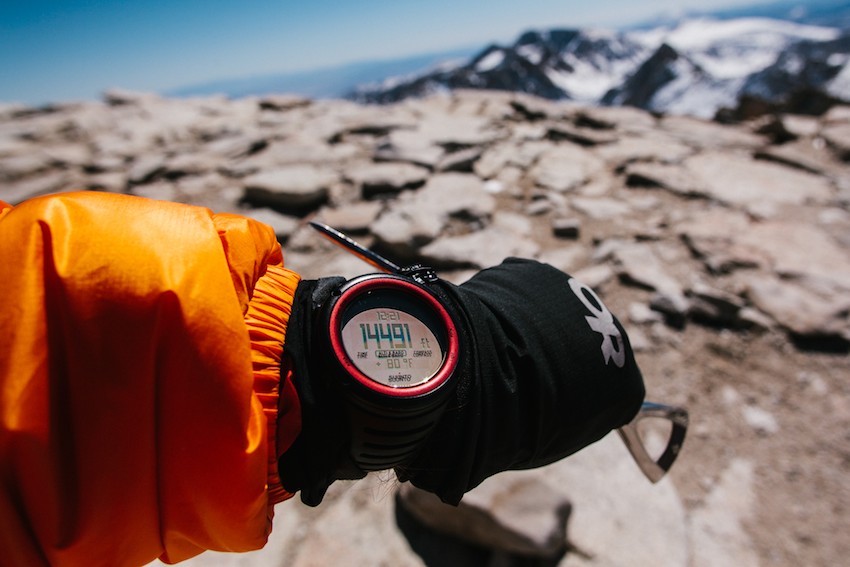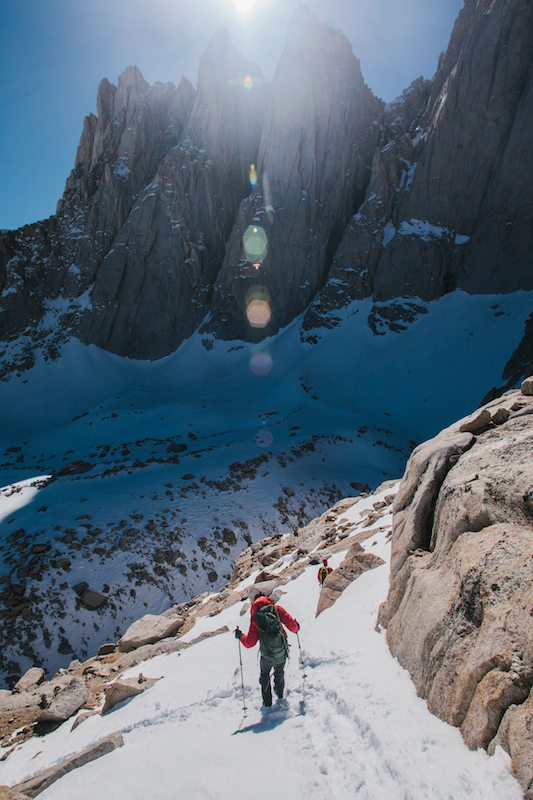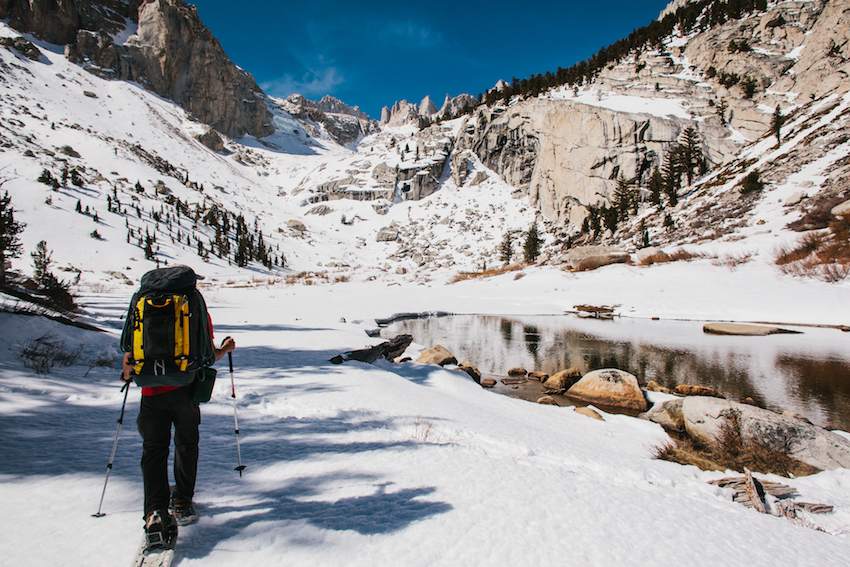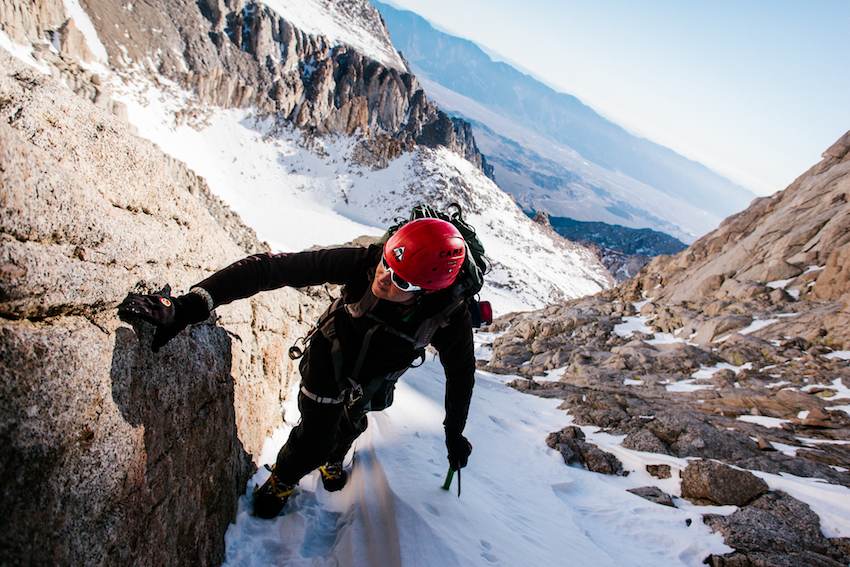Winter Mountaineering in the Sierra Overview Winter camping in the Sierra.
Winter mountaineering encompasses one of the most aesthetic and rewarding facets of the sport of climbing. Like all forms of the sport, winter mountaineering has as much to do with mental challenge as it does with physical endurance and the successful application of technical skills. In addition to applying a wide range of climbing skills, as a winter climber you must:
understand and evaluate snowpack stability
be proficient at assessing avalanche hazard
have a thorough understanding of mountain weather
be capable of route finding under occasionally difficult conditions
readily maintain suitable shelters in cold and wind
attend precisely to the details of climbing technique and protective systems.
This program is conducted while using snowshoes; previous snowshoeing experience is not required. Private instruction courses can also be taken as a ski mountaineering course using telemark or randonnee gear; to elect this option, you must be an advanced-intermediate skier capable of controlled descent on ungroomed, varied terrain. Please call our office for more information and private availability.
VIDEO
In our winter program our goals are to help intermediate to advanced level backpackers and mountaineers with minimal winter experience gain a complete repertoire of winter backcountry and climbing skills. This course will help prepare participants apply those skills in an expeditionary context, such as on Denali. We cover the challenges of cold weather camping at altitute; the complexity of backcountry travel (including both route finding and hazard evaluation); winter climbing, protective systems, and rope handling skills; and snowshoeing technique.
The curriculum is designed to prepare you for Arctic climbing as well as non-Arctic high altitude climbing, which commonly involves winter-like conditions. Upon completion of this program, you should be capable of gaining safe access to the backcountry and high alpine peaks, and you should be able to camp and climb comfortably in a variety of conditions. The training should allow you to become a proficient rope team member, capable of making alpine ascents of intermediate technical difficulty.
Other Winter Courses
Winter climbers should consider taking an avalanche safety course . AAI offers the AIARE Rec 1 avalanche curriculum in Washington's North Cascades, as well as in the Colorado Front Range starting in 2018. Please call the office for more information.
AAI also offers a Winter Mountaineering program in Colorado's Rocky Mountain National Park for climbers with no previous winter experience.
Winter Mountaineering in the Sierra Curriculum and Location AAI's Winter Comprehensive Progression
This winter mountaineering course can be combined with our waterfall ice program and our backcountry skiing program. When taken together or pieced together over a season or two, these programs together make up our "winter comprehensive curriculum." Here are links to the other two program areas in this progression:
Waterfall Ice Climbing (Sierra, CA)Backcountry Skiing (Cascades, WA)
Mount Whitney
Preparing to ascend Mt. Whitney in the winter. Julia Gawlas
Mount Whitney, the tallest peak in the Lower 48, is unique in that, conditions permitting, it is climbable in any month of the year. The conditions on Mount Whitney change widely from season to season, but contrasted with many of it's glaciated 14,000-foot partners in the Northwest, the weather is quite a bit better throughout the various seasons and the snowpack is usually excellent for climbing during the winter months.
This skills course will culminate in an attempted ascent of Mount Whitney via the Mountaineer's Route. In mid-summer, the Mountaineer's Route is a class three scramble. In the winter, it can range from a rock scramble lightly dusted in snow, to a full-on snow and ice climb with sections of up to 40 degrees in steepness.
Though only roughly 5 miles from trailhead to summit, don't under estimate its 6,000 feet of elevation gain; this trail is steep, but the challenge is rewarding.
Curriculum
Winter mountaineering, like all mountaineering, is an activity that is extremely subject to route conditions, snowpack, and weather. All these conditions dictate, to some extent, which subjects will be covered in detail. Normal core topics of instruction include introductions to:
The Physics & Physiology of Cold Weather
An introduction to human physiology in cold weather
Equipment, clothing, and shelter for the winter and expedition climber
Internal maintenance: food and hydration in a cold environment
A short introduction to avalanche safety, including snowpack mechanics, avalanche release mechanisms, route selection, and hazard mitigation. (For a complete introduction, take our Avalanche Level 1 course.)
A brief introduction to avalanche rescue procedures. (To become proficient, take the complete Avalanche Rescue course.)
Winter and Expeditionary Climbing, and Protective Systems Skills
Selection and use of ropes, knots and harnesses
Design concept, selection and use of ice axe and secondary hand tools
Proper choice and application of the primary ice axe positions: piolet canne , panne , and manche
Use of crampons, including French technique (flat-foot), German technique (front-pointing), and American technique
Selection and placement of snow and/or ice anchors for protection and belays, including – as appropriate to the conditions – pickets, deadmen, and bollards
Winter rock climbing and mixed climbing skills
Establishment and maintenance of fixed lines and fixed protection
Skills for Winter Travel
Techniques for snowshoeing varied backcountry snow conditions
Techniques for snowshoeing with a pack in low and high angle terrain
Route finding and tour planning
White-out navigation using both map & compass and GPS-based techniques
Leave No Trace climbing, camping, and travel skills
Winter Mountaineering in the Sierra Dates Booting up a snow slope in the Eastern Sierra.
Check out our Lee Vining Ice Climbing options if you would like to extend your winter skills curriculum.
Please note that if the scheduled dates do not work for you, this trip may be run on a private basis based on guide availability.
Winter Mountaineering in the Sierra Cost and Details Heading back to camp in the Eastern Sierra. Dylan Taylor
Pricing Per Person
$1895
Max Ratio - 2:1
Capacity - Max 4 participants
Cost Inclusions and Exclusions Inclusions: Included in the course cost is group technical climbing equipment, permits and camping fees, and the guide fee. As part of the expedition training, we will be backcountry camping for the duration of the course.
Exclusions: Not included in the course cost is transportation, personal clothing and climbing gear (including crampons, ice axe, harness, helmet, tent, etc), gratuities to guide, meals while on the course, lodging before of after course dates, or travel insurance.
Prerequisites
Multi-day self-supported backpacking
Snow or cold weather/winter camping at 30F or below
Ability to cook for yourself on a back country stove
Excellent physical fitness
Rental Equipment
The following items are available to rent through AAI in the Sierra:
helmets
harnesses
ice axes
crampons
ice tools
tents
avalanche gear (beacon/probe/shovel)
cooking gear (stove/pot/fuel)
snowshoes
backpacks
Please note that we do not rent mountaineering boots, sleeping bags or sleeping pads in the Sierra; your best option if you need this gear for your course is to contact Eastside Sports in Bishop, CA, or Mammoth Mountaineering in Mammoth Lakes, CA and to bring it with you the first morning of your course. A rental request survey will be included in your course confirmation email.
Lodging, Shuttle Service, and Directions Your travel dates should allow for an arrival in town the day before your program begins and for departure the day after your trip ends. We do not recommend that you fly out any earlier than the day after your course.
The closest major airport to Bishop is Reno, NV, which is roughly a four hour drive away. Other options include flying in to Las Vegas, NV or Mammoth Lakes, CA (limited service). Bishop is a small town with a variety of accommodation options you can take advantage of before or after your course.
During this course, you will be responsible for transportation for yourself and your guide to and from the course meeting location. If you would like assistance arranging a rental vehicle please feel free to contact our Travel Coordinator, Lisa Greif, at 509-972-4028.
Travel Insurance We strongly recommend that you purchase comprehensive travel insurance that includes trip cancellation coverage. Ripcord is our primary travel insurance provider, offering coverage for trip cancellation, trip delay, baggage, medical evacuation and other eventualities.
Unlike many vacations that are less physically demanding, a climbing and trekking vacation can be ruined by an illness or relatively minor injury that occurs before departure. While you can still tour a city or head to the beach with a sprained ankle or a very bad cold (albeit, less conveniently), such an injury or common illness can stop you in your tracks short of your climbing or trekking destination.
Winter Mountaineering in the Sierra Related Courses
Program Finder
By Location
United States - Alaska
United States - Washington
United States - California
United States - Nevada
United States - Colorado
United States - Utah
Canada - British Columbia
South America - Argentina
South America - Bolivia
South America - Ecuador
South America - Patagonia
South America - Peru
Europe - Alps and Caucasus
Asia - Nepal and Tibet
Asia - Laos, Thailand, & Vietnam
Asia - China
Asia - Japan
Africa - Tanzania
Pacific and Antarctica
By Program Type
Instructional Courses
Group Summit Climbs
Expeditions
Skills Expeditions
Private Guided Programs
Treks, Tours, & Backpacking
Corporate Outings & Services
Government & Military
By Activity
Rock Climbing
Ice Climbing
Alpine Climbing
High-Altitude Climbing
Trekking and Backpacking
Skiing & Snowboarding
Guide Training & Rescue
Avalanche Training
Departure Month
Difficulty Level
Beginner
Moderate
Intermediate
Advanced
Very Advanced
x
